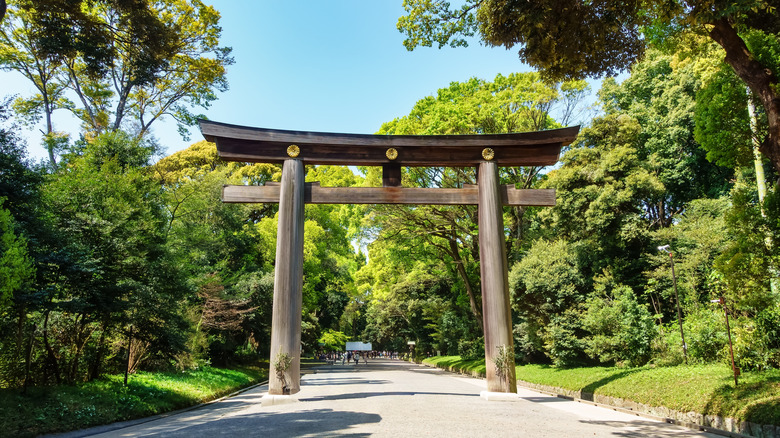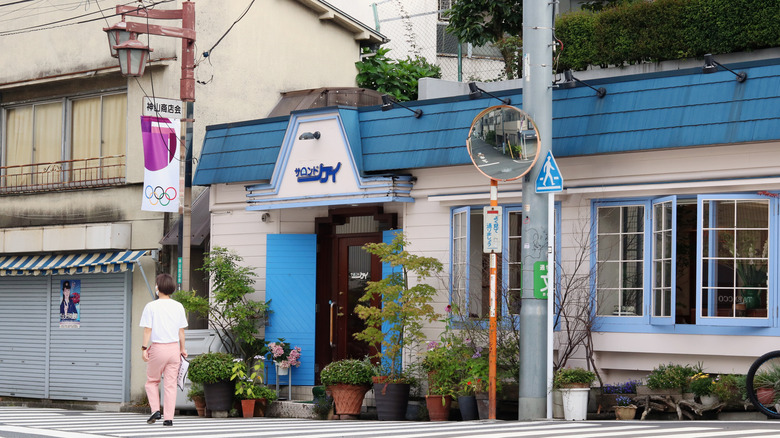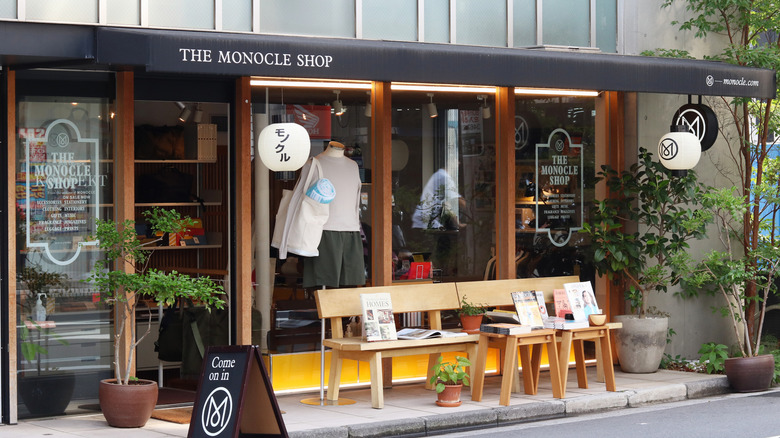One Of Tokyo's Most Underrated Neighborhoods Offers A Taste Of European Flair And Stunning Creativity
The constant daily flow of pedestrians at the famous Shibuya Crossing makes the idea of a quiet place in Tokyo seem unlikely. However, Shibuya — Japan's trendiest area full of animal cafés and nightlife adventures — hides a well-kept secret known to only a few. Tomigaya, just a 20-minute walk from Shibuya Station, is a place where your search for chinmoku (silence) and nodokasa (peacefulness) ends.
Tomigaya is one of Tokyo's small, underrated neighborhoods with a population of fewer than 10,000 residents. What makes this neighborhood stand out from the crowd is its mix of European-style coffee shops, carefully curated boutique stores, and lack of neon lights. Tomigaya gained popularity during the 20th century when emerging artists were in need of affordable rent. Fast forward to today and abandoned buildings have turned into art galleries, studios, and coffee houses — making it the creative and cultural district it is nowadays. With that in mind, both locals and tourists can escape to this quiet area and stroll through one of Japan's finest green spaces, Yoyogi Park.
Tokyo is easily accessible by air, with two international airports: Narita and Haneda. From either airport, you can take the subway, a bus, or a taxi to reach Shibuya Station, or head directly to Tomigaya.
European flavor around Tomigaya
Tomigaya provides an atmosphere reminiscent of some of the best European countries to visit. If you ask around, many locals will point you in the direction of Fuglen. Depending on your mood, this Norwegian cafe will be your breakfast place in the morning, or a cocktail bar to sample Japanese or Norwegian beers by night. For anyone with a sweet tooth, who doesn't love Portuguese pastel de nata? Nata de Cristiano's is your go-to spot. These egg-custard pastries are a delight to the eye — and a challenge to the waistline. Port Tomigaya is a cozy spot for tiramisu lovers, where you can indulge in a coffee-flavored treat while reading or enjoying time with your dog.
Night ascends, and a glass of wine is the answer you seek. Ahiru Store is a very popular wine bar serving mainly organic wine from France along with a small selection from Japan and other European countries, accompanied by tasty appetizers. Run by siblings Teruhiko and Wakako Saito, the tiny store opens at 3 p.m., and finding a free table may take some time in the evening. A more sophisticated atmosphere awaits at Été, where French cuisine is served personally by the chef herself. The tasting menu starts at $250 (as of this writing), and securing a reservation requires a bit of effort: You must first establish contact with the chef by buying one of her expensive, fashion-themed desserts.
What to see in Tomigaya
Many shops in Tomigaya don't display big signs to grab your attention, so part of the fun in exploring this district is staying curious about what's around you. Monocle Shop is popular in the area and embraces Tomigaya's essence: minimal yet sophisticated. The store is framed by modern wooden paneling offering a varied selection of Monocle products. Art is also the center of this town, and along with Tokyo's immersive digital art museum, Shibuya Publishing Booksellers is a well-known, innovative, and independent bookshop worth visiting. The store supports the work of many established and emerging artists in the capital, and it's a go-to place for anyone who is passionate about design and wants to explore the city's creative scene from a new perspective. It's also the perfect place to purchase fun little treasures as a souvenir. Most of the shop's books are in Japanese, with some in the English language.
Art is inclusive and for everyone, which is why, in 1996, Osamu and Kiyoko Suzuki established the Yoyogi Park Art Studio for children — a place where kids can express their creativity and cultivate an appreciation for everything behind an artistic creation. Contrast, meanwhile, is a creative studio designed as a bold and inventive space where artists from Japan and abroad showcase their present-day artwork.
Tomigaya's design houses also offer a glimpse into the minds behind the city's architectural and urban landscape. With the goal of an environment that offers privacy in a bustling city, architects created small homes with a generous sense of space. An example is the unbuilt conceptual design of the Tomigaya Building — a two-floor glass pavilion that provides privacy and visibility. Zaha Hadid came up with this project during the late 1980s, when Japan experienced an unprecedented growth in the real estate market, attracting architects from all over the world.


